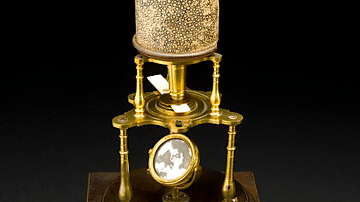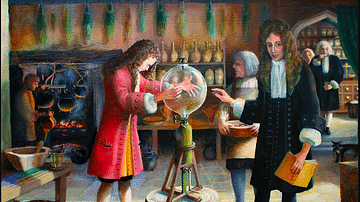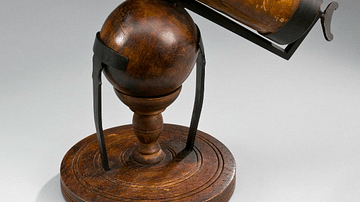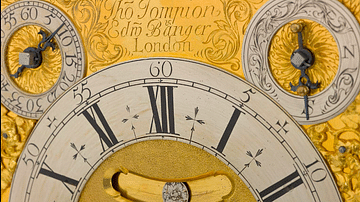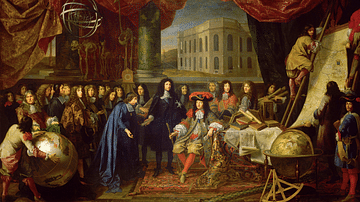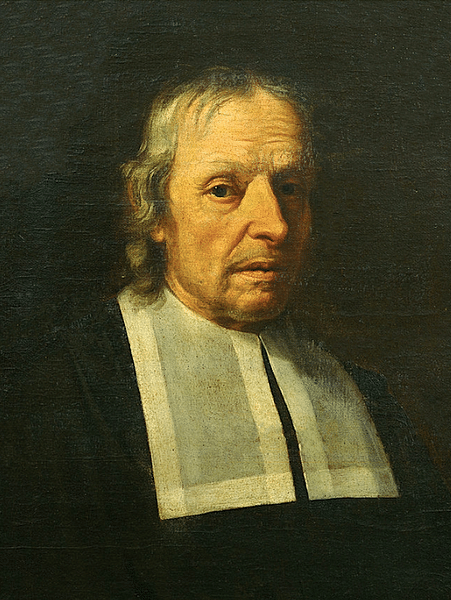
Marcello Malpighi (1628-1694) was an Italian scientist and physician famous for discovering the capillaries of the human circulatory system in 1661 and, as the greatest anatomist of the Scientific Revolution, founding the science of microscopic anatomy and embryology. Malpighi's work was regularly published by the Royal Society, and he was made a fellow of that society in 1668.
Early Life
Marcello Malpighi was born on 10 March 1628 in Crevalcore in Emilia-Romagna, northern Italy. He studied at the University of Bologna, where he received a medical degree and then a PhD in philosophy and medicine in 1653. Malpighi moved on to the University of Pisa, where he held a post as Professor of Theoretical Medicine between 1656 and 1659. Malpighi's future career was influenced in Pisa by the ideas of Giovanni Alfonso Borelli (1608-1679). Borelli, a member of the prestigious scientific body in Florence, the Academia del Cimento, believed that the world was mechanical, that is, cause and effect in all things were intrinsically linked and entirely visible. Borelli also instilled in Malpighi the importance of the new scientific method, that is, testing hypotheses against the results of repeated practical investigations and experiments.
Discovery of Capillaries
In 1659, Malpighi returned to the University of Bologna when he was appointed Professor of Medicine. Malpighi, remembering the advice of his old mentor Borelli, continued to investigate human anatomy using a still relatively new scientific instrument: the microscope. Dissection was another method, as was injecting coloured liquids into living organisms in order to better understand such phenomena as blood circulation. In 1661, Malpighi published On the Lungs, in which he demonstrated the structure of human lungs and how the blood circulated through pulmonary capillaries.
William Harvey's discovery of blood circulation in humans had occurred back in 1628. Harvey (1578-1657), an English physician, had determined the relationship between the blood system of the arteries and veins and the regular contractions of the heart, but it was Malpighi who discovered the important role of capillaries in this system of circulation. The capillaries are tiny blood vessels that provide the crucial link between the oxygenated blood of the small arteries and the blood that returns to the heart in the small veins. Nobody quite knew why the blood circulated at this stage, and various theories were proposed until Richard Lower (1631-1691) demonstrated that blood is oxygenated in the lungs and then pumped around the body by the action of the heart.

Ovism & Mechanical Philosophy
Malpighi continued to focus his microscopic lenses on other areas of the human body which interested him, such as the tongue (he identified the taste buds), liver, spleen, brain, and skin. He also studied in detail the anatomy of the silkworm, a handy subject because these creatures were easily available from silk farms, and their bodies are transparent, which aids observations of their inner workings. Malpighi published his findings in 1669. He had discovered that within a silkworm pupae, it was possible to see through a microscope the yet-to-be-fully-formed wings, legs, and antennae of the moth which would eventually emerge from the cocoon. This solved an age-old debate as to how insects transformed from pupae to winged creatures.
Silkworms were not a diversion since Malpighi was convinced that widening his knowledge of the anatomy of animals and the internal structures of plants would allow him to gain a clearer understanding of the workings of the human body. For this reason, he studied dissected frogs and examined their lungs. He studied in great detail chicken embryos, identifying many new features using his microscope. In so doing, Malpighi became, in effect, the founder of a new field of study: embryology. Malpighi's work on the embryo was published in On the Formation of the Chick in the Egg in 1673. Malpighi's interest in gaining an overview of as many life forms as he could did not always lead to greater knowledge. His studies of insect pupae, for example, led him down the wrong path of 'ovism' – the belief that an egg contains all the material needed to form a living creature of that species.

Another consequence of Malpighi's collective research was that it confirmed his view that the human body was a wonderful machine, further, that it is made of organs (what he called glands) which were themselves machines so intricate that their workings could only be seen through a microscope. In addition, the same mechanistic model and explanation of life was applicable to all other living organisms. He once wrote in a letter:
Nature, in order to carry out the marvelous operations [that occur] in animals and plants has been pleased to construct their organized bodies with a very large number of machines, which are of necessity made up of extremely minute parts…Nature's method, then…is to make use of little parts, such as salt, filaments, and the like, and with these minute things to construct every work…Just as Nature deserves praise and admiration for making machines so small, so too the physician who observes them…must also correct and repair these machines as well as he can every time they get out of order.
(Moran, 162)
Recognition
Malpighi taught medicine at the University of Messina in Sicily for several years, beginning in 1662, and between 1666 and 1691, he ran a medical practice in Bologna while continuing his more academic pursuits. In an example of the spirit of international cooperation that was evident during the Scientific Revolution, Malpighi regularly had papers published in Philosophical Transactions, the unofficial journal of the Royal Society in London. A key figure in the society was the former diplomat Henry Oldenburg (c. 1615-1677), who served as the society's secretary. Oldenburg ensured that correspondence was maintained between the society and many scientists across Europe, Malpighi included. Oldenburg once wrote to the Italian: "Our company of philosophers thinks that you are treading the real paths leading to a true knowledge of nature's secrets. You devote your mind and hands to observing accurately and eviscerating minutely the things themselves" (Jardine, 125). In 1668, Malpighi was made a fellow of the Royal Society. His reputation grew to such an extent over the years that he attracted the interest of Pope Innocent XII (in office 1691-1700), who appointed him his official physician in 1691.
Criticism
It was not all plain sailing. Malpighi came under increasing attacks for his studies by traditionalists who were not interested in microscopy but believed that such matters remained the domain of the divine Creator. Put plainly, for some, the inner workings of the human body were not humanity's concern since God knew best. Further, identifying malfunctions or diseases in organs, for example, was to suggest that God was not capable of perfection. Malpighi's discoveries also challenged other traditional models of how the human body worked; some of these went back to antiquity, such as the work of the hugely influential Greek physician Galen (129-216 CE).
Malpighi and other microscopists also faced many doubters of such instruments as the microscope since they were notoriously difficult to use and gain a clear image of the prepared slide under view. There were suspicions that such instruments could never be as reliable as the direct use of the human senses. Even those who agreed that what Malpighi was seeing through his microscope lenses was really there pointed out that these new discoveries did not help practical medicine. Doctors were not inclined to change the traditional methods they used to cure and alleviate the symptoms displayed by their patients. Doctors were simply not helped by a whole new series of complications to consider when dealing with the human body. These attacks were not merely from opposing medical practitioners and theorists who restricted themselves to criticising Malpighi's work in academic journals. In 1684, Malpighi's own home was burned down, with the loss of his scientific instruments and most of his research papers. Fortunately, this catastrophe did not prevent Malpighi from publishing a collection of his works in 1686.
Death & Legacy
In his final years in Rome, Malpighi's reputation remained high, and he was awarded the honorary title of count. He was also invited to join the prestigious College of Doctors of Medicine. Marcello Malpighi suffered ill health in the latter part of his life, and he died in Rome on 30 November 1694. Three years later, Malpighi's remaining manuscripts were collected together and published by the Royal Society.
Malpighi's name lives on with certain anatomical features of the human body named after him: The Malpighian bodies found in a human kidney – renal corpuscles that act as filters of the blood in that organ. In human skin, the outermost layer is still called the Malpighian layer. Perhaps Malpighi's greatest legacy was his challenge to traditional and erroneous theories of how the human body worked and how to treat ailments. As a key figure in the Scientific Revolution, Malpighi championed the experimental focus of the new scientific method and ensured that his findings were shared with other scientists so that further breakthroughs could be made in the future.

